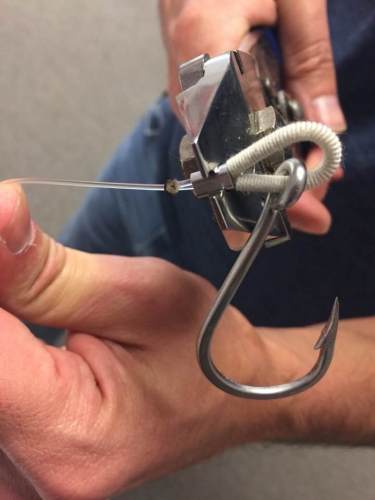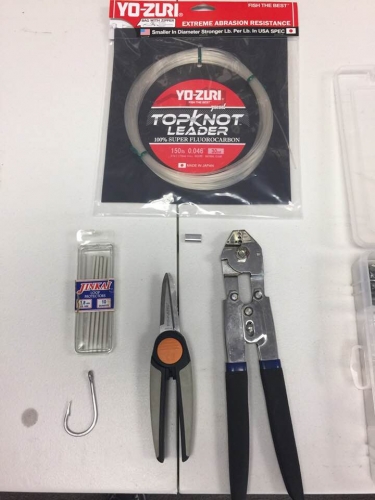uni-knot
A Knotted Up Mess!!! (pt. 2)
Previously we talked about different knots to tie in freshwater applications, but now let’s dive into another simpler topic. From the time I move to Florida and started getting more experienced into saltwater fishing I quickly learned that saltwater anglers stick to the basics; this includes the knots they tie. Now just like freshwater anglers, everyone has their preferences but from what I have experienced is anglers stick to the knots: loop knot and Uni-Knot for tying to their favorite Yo-Zuri lure, Uni-to-Uni Knot for adjoining main lines to leaders, and then there is the art of crimping.
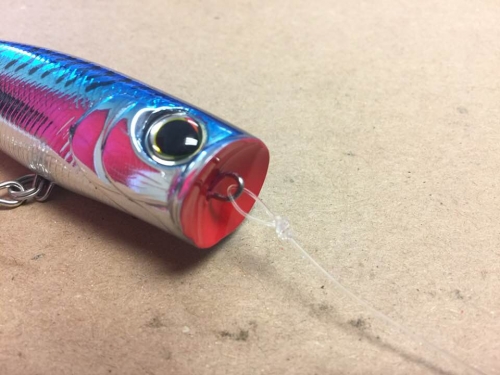
The basic loop knot is probably used the most in saltwater fishing because it is simple to tie with heavier fluorocarbon or monofilament leaders. Tying a loop knot also gives the bait the ability to move more freely in the water, which will create more action. As you can see in the photo, the actual knot is away from the lure, not at the actual line tie.
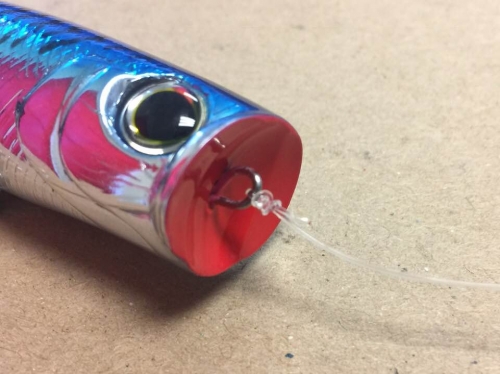
The Uni-Knot is also a favorite among saltwater anglers for the same attributes as the loop knot; it is easy to tie, works well with larger pound test line, however does not give the bait an extra moving ability. The Uni-Knot is tied directly to the lure line tie and is common to tie for the baits that just swim through the water column and resemble a bait fish.

One popular fishing technique that is shared among both freshwater and saltwater anglers, using a braided mainline to a leader material. Commonly anglers use a Uni-to-Uni knot for this application. Typically an angler will wrap the leader material four or five times around the braided mainline to form one Uni-Knot, then wrap the braid around the leader material ten to fifteen times to form the second Uni-Knot before tying them tight together. This knot is relatively small and will easily go through your rod guides when casting. The friction on the two knots is pulling against one another so the Uni-to-Uni Knot will hold up well.
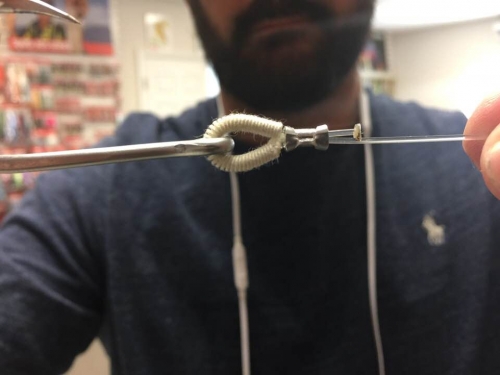
Finally, another form of knot tying that requires tool is not really a knot: crimping!!! Crimping is something a lot of saltwater anglers will use for tying on lures with heavy and large test line. Commonly anglers will implement a crimping technique when using 80lb test or larger; something for fishing to beat world records!!! Crimping tools required are: Crimpers, a Crimp, Chaff Tubing, and of course your favorite Yo-Zuri lure or one hook for live bait fishing. To perform this properly you will want to: feed the mainline through the crimp and chaff tubing, go around the eye of the lure, and feed through the crimp again. It is suggested that pull all the components as far down as you can but still leave a little room in case the mainline does slip a little. This is very common anglers that are using live bait with larger leaders and trolling bait (Yo-Zuri Bonita and Mag Speed Vibe are common examples).
